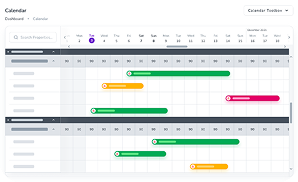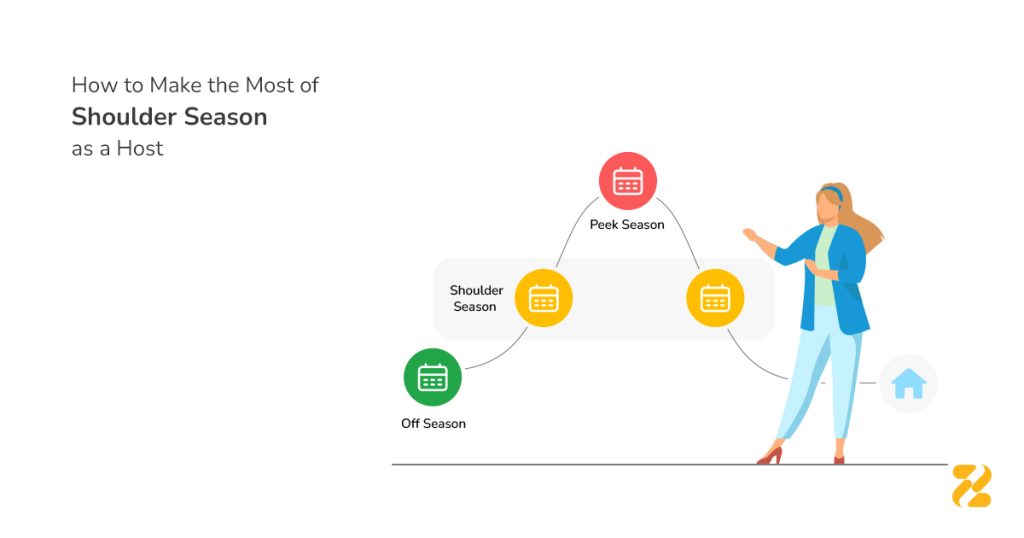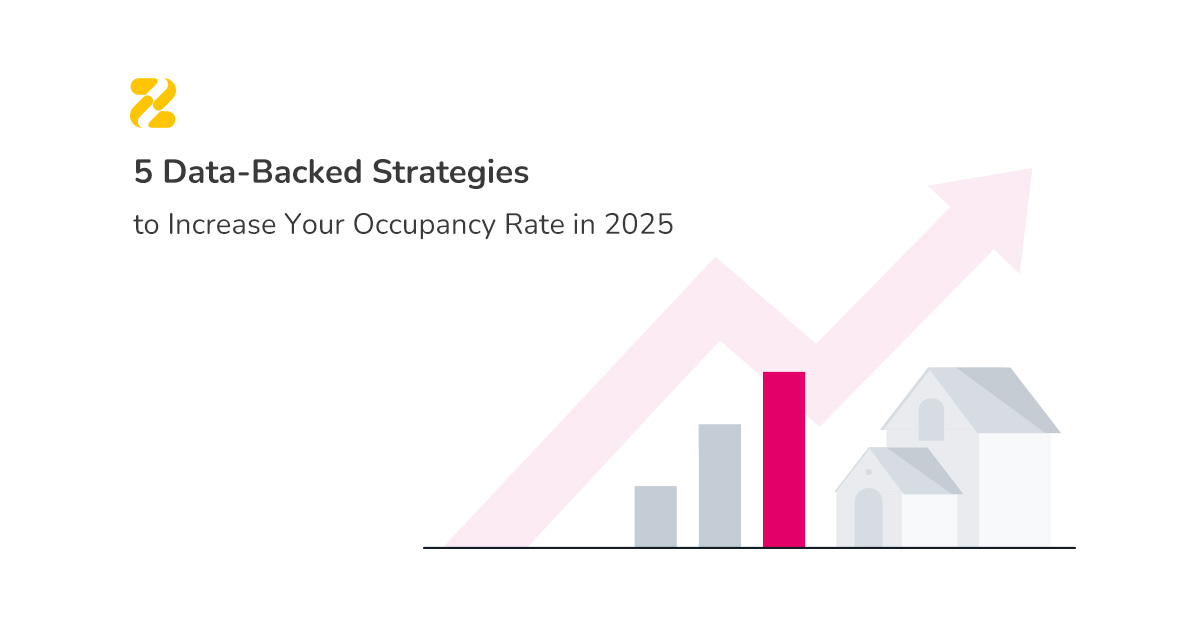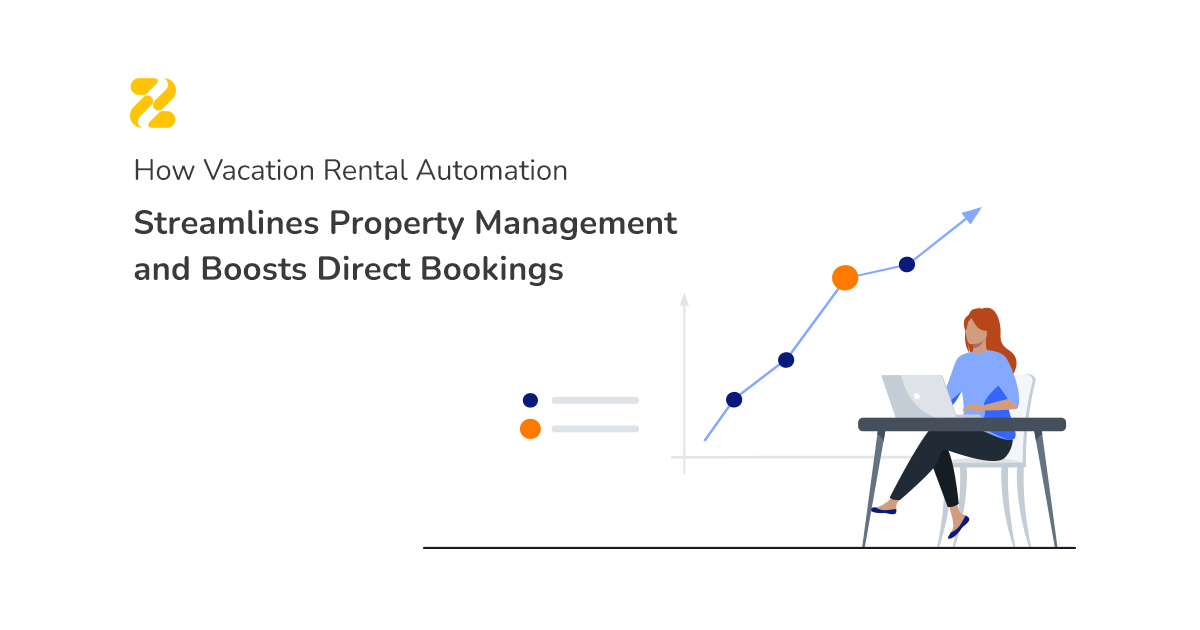For hosts, shoulder season is particularly important because it helps maintain a steady stream of bookings throughout the year. Hosts can increase the occupancy rate and maximise their rental income by attracting guests during these times. Let’s explore how this can be achieved.
Table of Contents
What Is Shoulder Season?
While you might be unfamiliar with the term “shoulder season,” you’re likely aware of peak and low seasons. Here’s a simple explanation:
- Peak Season: The time when demand for travelling is at its highest.
- Low Season: The time when demand for travelling is at its lowest.
- Shoulder Season: The transitional period between peak and low seasons.
The vacation rental market is seasonal, with peak times bringing the highest demand and prices. During the shoulder season, demand decreases from peak levels but is still higher than in the low season. This period offers travellers more affordable rates and fewer crowds, while still providing property owners with a reasonable flow of guests.

Why Do We Call It Shoulder Season?
The term “shoulder season” is believed to have originated from the concept of the “shoulder” on a bell curve, representing the period between peak and off-peak seasons. If you think about your shoulders as being in between your head – or the peak – and your arms, this season follows that principle of being the middle ground.
Also, the term “shoulder” suggests that this period is “shouldering” the burden of the tourism industry. It allows for more consistent business during a time that would otherwise be less profitable.
Identifying Your Vacation Rental’s Shoulder Season
To make the most of this period, it’s crucial to pinpoint its timing for your vacation rentals.
- Evaluate Location and Climate: Understand how seasonal changes impact your rental’s appeal. Identify when the weather is ideal or when tourist numbers dwindle.
- Explore Local Attractions: Research the top activities and attractions that draw visitors to your area. Determine peak times and when interest wanes.
- Track Annual Trends: Look into local events or festivals that drive tourism. These can dramatically affect demand for rentals at different times of the year.
When Is Shoulder Season in Europe and the UK?
Shoulder season in Europe typically spans early spring (March and April) and late autumn (late September through early November). During these periods, tourist traffic tends to decrease compared to peak summer months, offering a quieter and potentially more affordable travel experience.
The non-peak period in the UK happens twice annually, running from March through May and from September through November. It’s an ideal period for travellers looking to steer clear of the bustling crowds typically seen during the summer months.

When Is Shoulder Season in the United States?
The United States boasts diverse climates and landscapes that attract tourists throughout the year. Generally, the quiet season in the U.S. aligns with spring and fall, similar to Europe.
The shoulder period is favoured due to milder temperatures compared to the harsh winters and scorching summers experienced in certain regions. Families often find shoulder season ideal for travel due to more comfortable weather conditions.
7 Strategies to Maximise Your Shoulder Season
During this time, schools and colleges are in session, and major holiday activities are either forthcoming or have already concluded. So, there would be a noticeable dip in travel demand. This creates a prime opportunity for vacation rental owners to entice potential guests with competitive pricing and special offers.
Here are some ideas to make your property more appealing and accessible during these quieter periods.
1. Target Niche Markets
Identify niche markets that might find non-peak seasons appealing. This includes retirees looking for quieter travel times or families without school-aged children who can travel outside of peak vacation times.
2. Offer Special Packages or Deals
Create attractive packages or discounts tailored for shoulder season guests. This can include early-booking discounts, mid-week specials, or bundled services like guided tours or spa treatments.
Promote discounts and deals via social media channels and your direct booking website to maximise visibility and bookings.

3. Adjust Pricing Strategically
While shoulder season typically sees lower demand, adjusting your pricing competitively can help maintain occupancy levels. Consider dynamic pricing strategies based on demand fluctuations.
4. Optimise Minimum Stay Requirements
During peak demand, you should consider extending your minimum stay requirement to 7 days. However, in the quieter season, lowering this requirement accommodates budget-conscious travellers seeking reduced accommodation and flight costs.
Decreasing the minimum number of nights accommodates a wider range of guests and increases your bookings.
5. Promote Seasonal Attractions
Leveraging local events and festivals is a key strategy for hosts to boost occupancy during the shoulder season. By highlighting unique local events, activities, and natural phenomena that occur during these times, you can attract guests looking for memorable experiences.
6. Update Your Listing
Update your vacation rental listing with fresh seasonal photos and compelling descriptions that vividly showcase the advantages of choosing shoulder season for a getaway.
7. Boost Your Local Connections
Collaborate with local businesses to promote sustainable and local travel choices. Building a network and supporting each other is a way to contribute to the community. It enhances your competitiveness during the transition period by offering unique experiences.

In conclusion, hosts can significantly benefit from the shoulder season by capitalising on the unique opportunities it presents. By offering competitive pricing and promoting seasonal attractions, hosts can appeal to more visitors during these transitional periods.
Additionally, leveraging this period to perform maintenance and upgrades ensures properties are in top condition for peak times. Ultimately, a strategic approach to the shoulder season can lead to increased occupancy rates, steady revenue streams, and long-term guest loyalty.
Image by pch.vector on Freepik.




